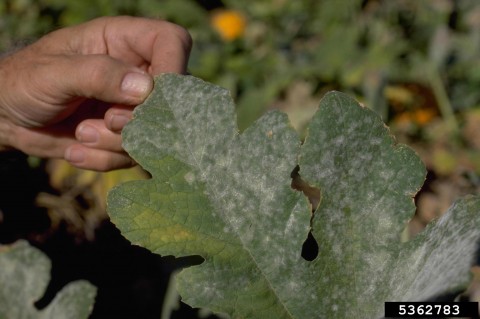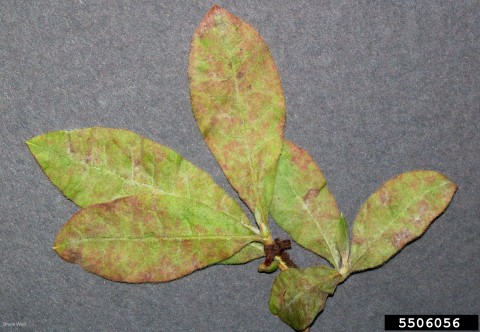
On squash, pumpkin and most landscape plants, powdery mildew looks like a fuzzy, whitish coating that resembles a thick powder. Photo: Howard F. Schwartz, Colorado State University, Bugwood.org.
Do your squash plants look like they’ve been dusted with flour or talcum powder? Does your rhododendron have spots on the leaves? You may have powdery mildew.
Powdery mildew does best when damp nights are followed by warm, sunny days, such as in late summer and fall. It is common on a wide range of plants in western Washington, including annuals, perennials, food crops and ornamental shrubs.

On rhododendron, symptoms include spotted leaves, with brownish-purple or yellow spots on the underside and sometimes ring-shaped spots on the upper leaf surface. Photo: Bruce Watt, University of Maine, Bugwood.org.
My zucchini plants often get powdery mildew in August, about the time I’m getting tired of finding something else to do with zucchini. It lets me know the harvest is winding down.
What you can do
- Choose disease-resistant plants or varieties. Many plants have cultivars bred to resist powdery mildew. The American Rhododendron Society has local lists of resistant varieties.
- Prune out severely affected leaves when symptoms are present.
- Prune out dense growth to help increase air circulation.
- Begin monitoring for powdery mildew symptoms in mid-summer. Call us if you are concerned.
- Be careful about where your plants are situated. Plants that are next to the house may get powdery mildew even if they are not prone to the disease.
